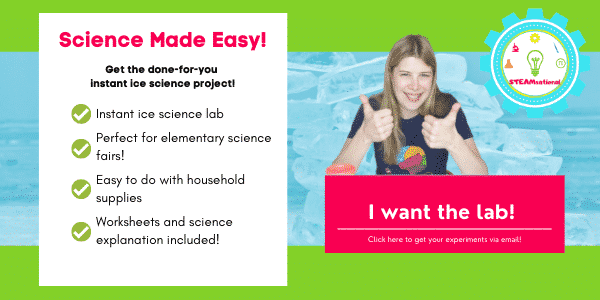If you love ice, you’ll love these instant ice experiments! They are a fun way to bring science out of the freezer and into the classroom or your kitchen! I always like to bring something different or fun into our science lessons for kids when possible, and instant ice is one of the easiest science projects you can do that has visible, impressive results. While you can make these ice experiments any time of year, we really like exploring them as part of winter STEM activities for kids!
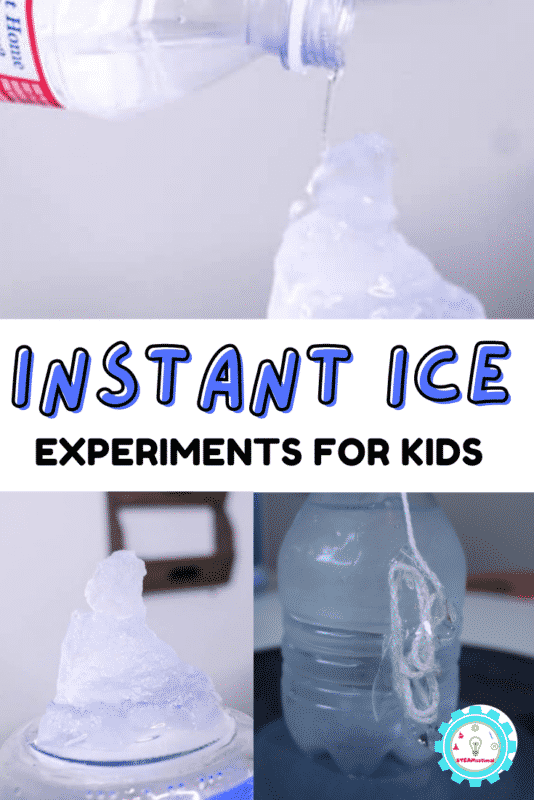
Keep reading to find directions for all of the instant ice experiments!
What is Instant Ice?
Instant ice is a liquid that has been cooled below the freezing point but still holds it’s liquid form. When you pour the water over ice cubes, the process of nucleation causes ice to form instantly!
Why Does Instant Ice Work?
Instant ice works because of nucleation. In nucleation, one small action can start a chain reaction. Think about the domino effect.
The domino effect works inside the bottle to make crystals. Read more about the science behind instant ice below!
The Science Behind Instant Ice
Instant ice won’t work if you use water that has impurities like tap water or rain water. Crystal formation of any kind usually requires a “seed” of some sort, which is a rough object that the crystals form around.
But because bottled water doesn’t have any impurities, at first, there isn’t anything for crystals to form around. Eventually, no matter how pure the water is, it will freeze if it gets cold enough. In this case, you’ll often see incredibly clear ice cubes, because there are no formed crystals inside.
However, the purity of bottled and distilled water allows the water to cool below zero degrees Fahrenheit while still in a liquid state.
But as soon as you start the nucleation process, by hitting the bottle or by pouring it over an ice cube, ice crystals start to form instantly.
How Long Does it Take to Make Instant Ice?
It varies depending on your freezer’s temperature, but in most cases, it will take anywhere from 30 minutes to two hours to get the water cool enough to make instant ice. Even preschoolers can get in on the icy fun with these winter STEM activities for preschoolers.
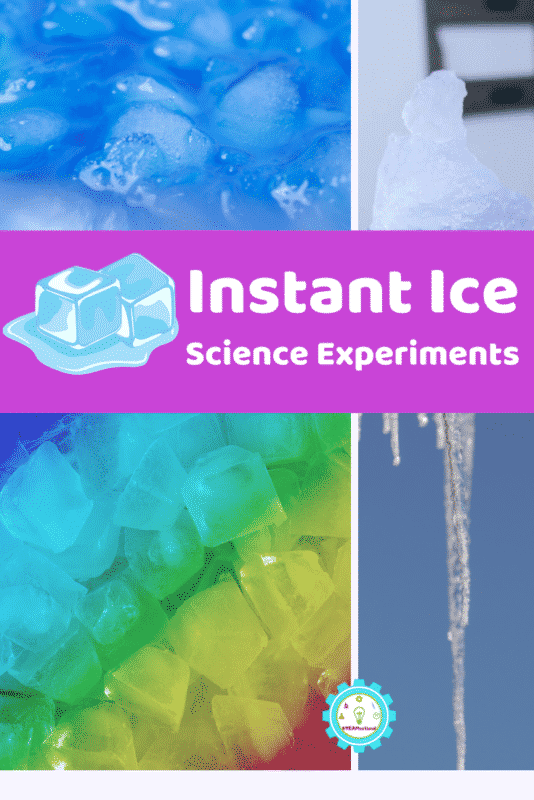
Materials for Instant Ice Experiments
Shop these Amazon affiliate links for everything you need to make ice crystals, fast!
How to Make Instant Ice
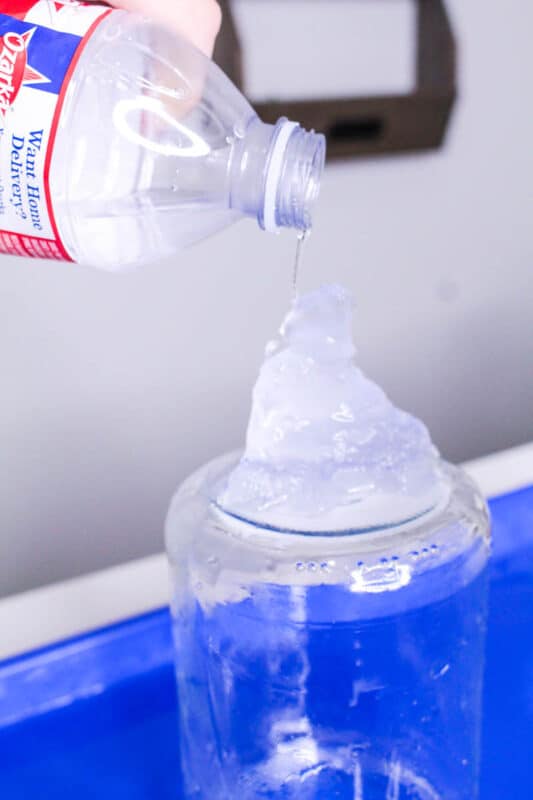
Making instant ice is one of the easiest science experiments you can try! Follow our tutorial for How to Make Instant Ice in 5 Seconds.
It’s really fun once you get it to turn out right!
How to Make Instant Ice Crystals
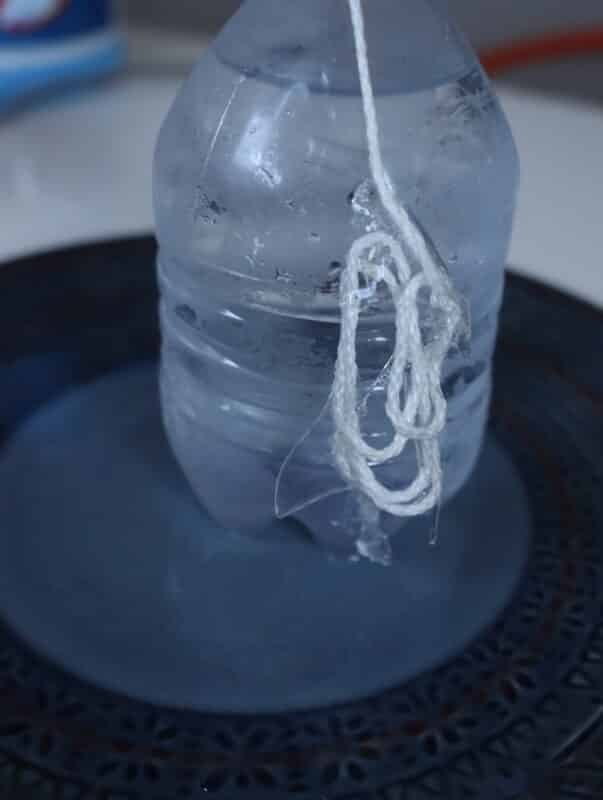
We’ve experimented with a lot of ways to make ice crystals fast. Even though typically instant ice doesn’t work with an impurity present, we found a way to make instant ice crystals on a string!
How to Make an Instant Ice Tower
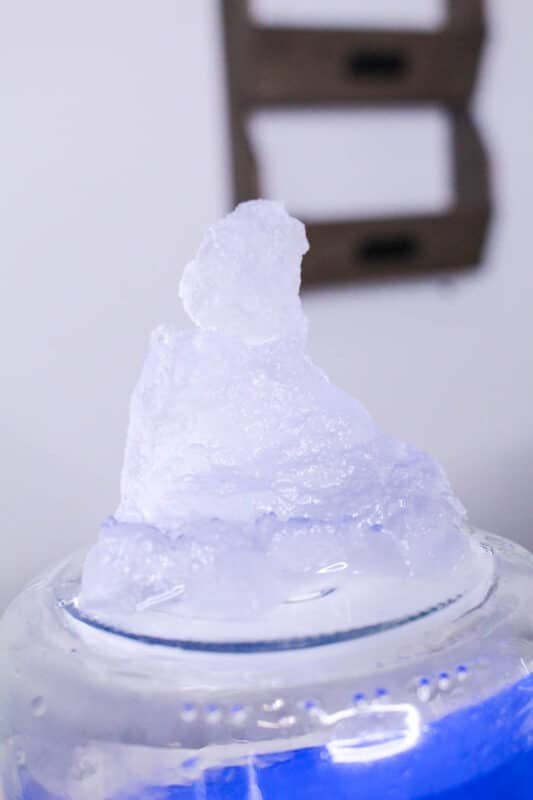
An ice tower is a lot of fun to make and if your water is the right temperature, you can really get your ice tower to grow really tall! Learn how to make an instant ice tower here.
How to Make Frost in a Can
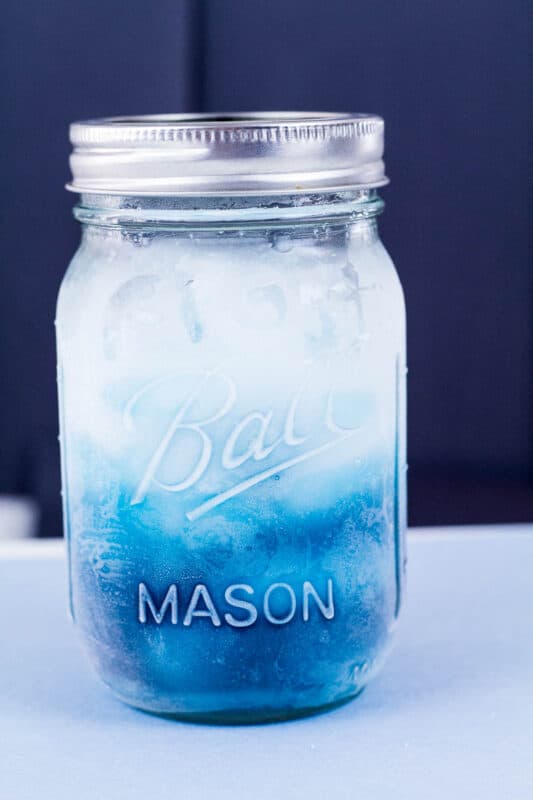
Another fun way to make ice fast is by making frost in a can! With some salt, a can, and ice, you can learn how to make frost crystals in seconds! Learn how to make frost in a can here!
You can also find the answer to how does frost form?
How to Make Instant Ice in a Water Bottle
The easiest way to make instant ice is in a water bottle! All you need is distilled water or purified water in a plastic water bottle.
Put the water bottle in the freezer and wait 30 minutes. Hit the bottle on the side and see if crystals instantly form. If they don’t, your water isn’t cold enough yet.
Check on your bottle every 30 minutes and eventually, crystals will form.
If you wait too long, the water will freeze and you will see ice inside the bottle.
That’s why I like to try and freeze several bottles at once in case some crystalize too early.
You can thaw any bottles that freeze and re-freeze them to try the ice experiment again.
Ice Fishing Science Experiment
A fun variation on instant ice experiments is ice fishing! In ice fishing, you use salt to melt the surface of an ice cube.
Since the rest of the ice cube is still freezing, if you stick something to the surface of the ice cube, like string, it will re-freeze and get stuck to the ice cube. Now you’ve “caught” an ice cube!
Good job, fisher!
Rainbow Instant Ice
Once you try making regular ice crystals from clear water, try making rainbow instant ice with colored water!
Just be prepared, because the food coloring does introduce an impurity, sometimes it’s harder for the water to crystalize properly. So you’ll need a lot of bottles!
Instant Ice Science Fair Project
We love instant ice so much, we made a science fair project around it! If you want the instant ice science fair project, we include everything you need including questions to ask, variations to try, and record worksheets so you can record your results!

